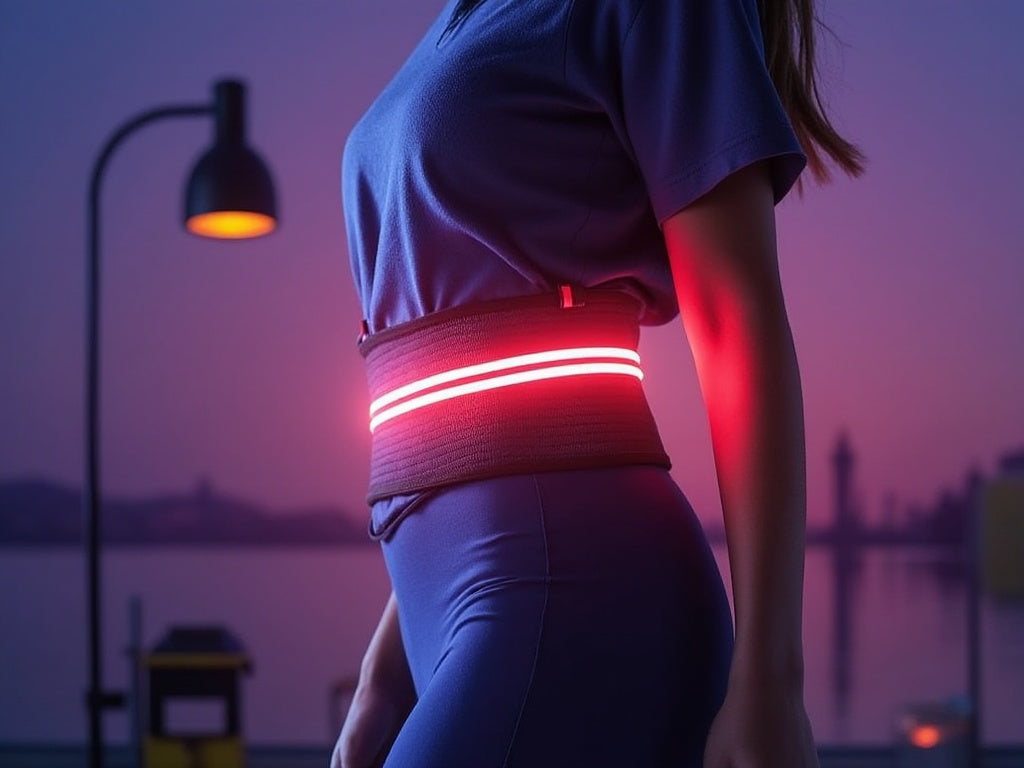Red light therapy belts have gained significant popularity in recent years as a non-invasive, drug-free approach to various health and wellness concerns. These innovative devices harness the power of red and near-infrared light to potentially improve skin health, reduce pain, and enhance overall well-being. But what exactly does a red light therapy belt do, and how can it benefit users?
The Science Behind Red Light Therapy
Red light therapy, also known as low-level light therapy (LLLT) or photobiomodulation, uses specific wavelengths of red and near-infrared light to stimulate cellular function. According to a study published in the journal "Seminars in Cutaneous Medicine and Surgery," these wavelengths can penetrate the skin and interact with mitochondria, the powerhouses of cells, potentially boosting energy production and promoting healing [1].
Key Benefits of Red Light Therapy Belts
Red light therapy belts offer several potential benefits, including:
1. Pain Relief and Inflammation Reduction
One of the primary uses of red light therapy belts is for pain management. Research suggests that red light therapy may help reduce inflammation and alleviate chronic pain conditions such as arthritis, fibromyalgia, and back pain [2]. The therapy is thought to work by increasing blood flow and reducing oxidative stress in affected areas.
2. Skin Health and Anti-Aging
Red light therapy has shown promise in improving skin health and reducing signs of aging. A study in the "Journal of Clinical and Aesthetic Dermatology" found that red light therapy can increase collagen production, improve skin texture, and reduce the appearance of fine lines and wrinkles [3].
3. Muscle Recovery and Performance
Athletes and fitness enthusiasts may benefit from using red light therapy belts to aid in muscle recovery and performance. Research published in the "Journal of Athletic Training" suggests that red light therapy can reduce muscle fatigue and soreness after exercise, potentially leading to faster recovery times [4].
4. Improved Circulation
Red light therapy belts may help improve blood circulation by stimulating the formation of new capillaries. This increased blood flow can contribute to better overall health and faster healing of injuries [5].
How to Use a Red Light Therapy Belt
Using a red light therapy belt is typically straightforward:
- Position the belt on the target area of your body
- Turn on the device and set the desired intensity and duration
- Relax while the light therapy is applied (usually 10-20 minutes per session)
- Repeat treatments as recommended, often 3-5 times per week
For those interested in experiencing the benefits of red light therapy, high-quality devices like the OMYGuard Red Light Therapy Belt offer convenient and effective treatment options.
Safety and Considerations
While red light therapy is generally considered safe, it's essential to follow manufacturer guidelines and consult with a healthcare professional before starting any new treatment regimen, especially for individuals with pre-existing medical conditions or those taking photosensitizing medications.
Conclusion
Red light therapy belts offer a versatile and non-invasive approach to various health and wellness concerns. From pain relief and skin rejuvenation to muscle recovery and improved circulation, these devices have the potential to benefit a wide range of users. As research in this field continues to evolve, red light therapy belts may become an increasingly popular tool for those seeking natural ways to enhance their overall well-being.
References:
- Avci P, et al. Low-level laser (light) therapy (LLLT) in skin: stimulating, healing, restoring. Semin Cutan Med Surg. 2013;32(1):41-52.
- Hamblin MR. Mechanisms and applications of the anti-inflammatory effects of photobiomodulation. AIMS Biophys. 2017;4(3):337-361.
- Wunsch A, Matuschka K. A controlled trial to determine the efficacy of red and near-infrared light treatment in patient satisfaction, reduction of fine lines, wrinkles, skin roughness, and intradermal collagen density increase. Photomed Laser Surg. 2014;32(2):93-100.
- Leal-Junior EC, et al. Effect of phototherapy (low-level laser therapy and light-emitting diode therapy) on exercise performance and markers of exercise recovery: a systematic review with meta-analysis. Lasers Med Sci. 2015;30(2):925-939.
- Ihsan FR. Low-level laser therapy accelerates collateral circulation and enhances microcirculation. Photomed Laser Surg. 2005;23(3):289-294.
